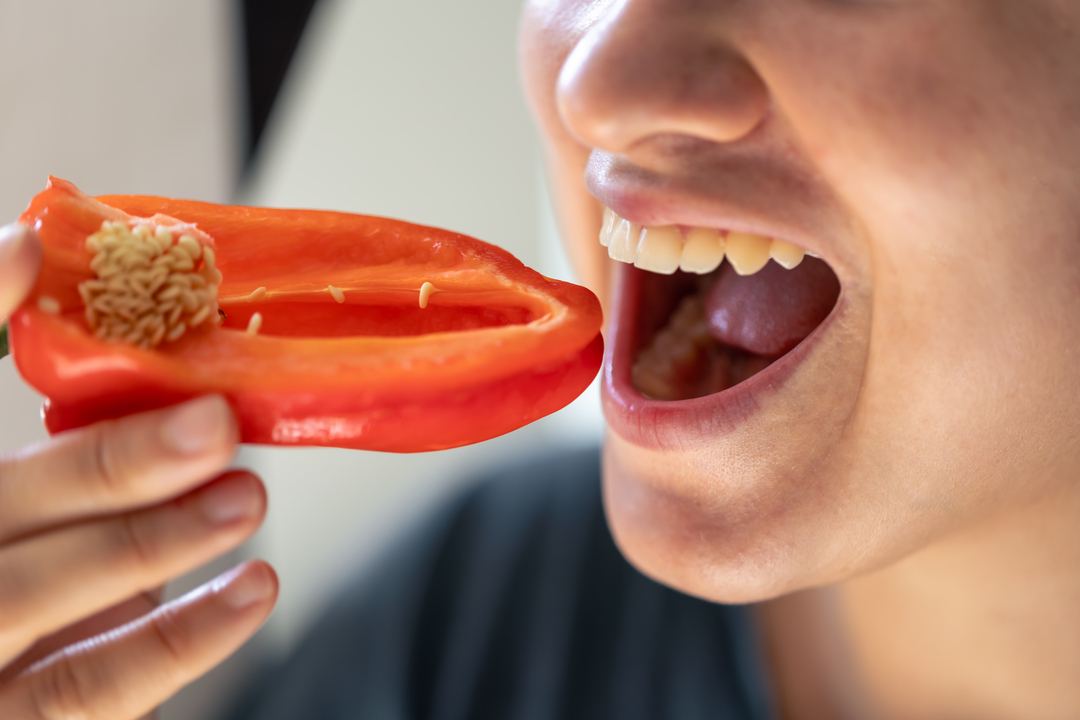
CNA – When we indulge in spicy dishes, we often don’t think twice about it. From the fiery Samyang Buldak instant noodles to the tantalising heat of a good curry, spicy food is a staple for many.
However, recent events have cast a spotlight on the potential dangers of consuming extremely spicy food.
SPICY NOODLES: TOO HOT TO HANDLE?
Samyang’s Buldak instant noodles, a beloved South Korean brand, recently made headlines for being banned in Denmark. The Buldak 3x Spicy & Hot Chicken, Buldak 2x Spicy & Hot Chicken, and Buldak Hot Chicken Stew were all deemed too spicy.
On June 11, the Danish Veterinary and Food Administration issued a statement declaring the spice levels in these noodles to be “so high that they pose a risk of the consumer developing acute poisoning.”
The administration advised consumers to discard the products or return them to the store.
To put the spiciness into perspective, the Buldak 3x Spicy & Hot Chicken has a Scoville Heat Unit (SHU) rating of 13,200, the Buldak 2x Spicy & Hot Chicken stands at 10,000 SHU, and the Buldak Hot Chicken Stew is 4,400 SHU.
While these numbers are significant, they pale in comparison to the bird’s eye chilli (100,000 to 250,000 SHU) and the infamous Pepper X (2.6 million SHU).
CAN SPICY FOOD BE FATAL?
The question of whether consuming extremely spicy food can be lethal arose after the tragic death of an American teenager in September 2023.
The teenager participated in the “One Chip Challenge,” eating a tortilla chip dusted with Carolina Reaper and Naga Viper pepper extracts. These peppers are among the hottest in the world, with the Carolina Reaper scoring 2.2 million SHU and the Naga Viper at 1.3 million SHU.
The teenager’s death was attributed to cardiopulmonary arrest, possibly exacerbated by an underlying heart condition.
Dr Syed Haider, a cardiologist at MedStar Washington Hospital Center, noted that large doses of capsaicin, the compound responsible for the heat in chillies, could increase heart strain, potentially leading to serious complications. However, such extreme reactions are rare.
Dr Shim Hang Hock, a gastroenterologist from Parkway East Hospital, explained that while eating very spicy food might make you feel like you’re dying, it is unlikely to cause death.
Most people will experience intense but temporary symptoms such as pain, burning, sweating, nausea, and vomiting.
It is essential, however, to be aware of your tolerance levels, especially if you have existing medical conditions.

WHY DO WE LOVE SPICY FOOD?
Capsaicin, the chemical compound that gives chillies their heat, binds to TRPV1 receptors in our bodies, which detect heat and pain.
According to Dr Melvin Look, director of PanAsia Surgery, these receptors can also be triggered by other noxious stimuli like actual heat or acid. This response is a protective mechanism to prevent us from consuming harmful substances.
Despite the pain, many people enjoy spicy food because capsaicin triggers the release of endorphins, the body’s natural painkillers. This can create a pleasurable sensation. Additionally, the warmth produced by capsaicin can be comforting.
However, there are potential downsides to consuming large amounts of capsaicin. It can cause heartburn, chest pain, abdominal pain, and diarrhoea.
People with gastrointestinal issues such as gastroesophageal reflux, gastritis, and irritable bowel syndrome may be more sensitive to capsaicin.
HOW MUCH IS TOO MUCH?
Dr Look explained that as little as 0.5mg to 1mg of capsaicin can cause mild unpleasant effects.
More serious symptoms, such as cold sweats, changes in blood pressure, or dizziness, may occur when more than 170mg is ingested, equivalent to eating 1kg of jalapeno peppers. These symptoms, while extremely unpleasant, usually subside within half a day.
The lethal dose of capsaicin for an adult is estimated to be around 35,000mg. Consuming such an amount would require eating far more spice than most people can tolerate, often seen in extreme spice-eating challenges.
The level of gastrointestinal discomfort can also increase with higher Scoville ratings. However, there is no set minimum level on the Scoville scale that will cause issues, as individual tolerance varies based on genetics, personal preference, and cultural influences.

ACUTE POISONING FROM CAPSAICIN: MYTH OR REALITY?
While the Danish Food Agency’s warning about acute poisoning from capsaicin might sound alarming, Dr Shim reassures that it is rare unless consumed in very high amounts, particularly in vulnerable individuals.
Inhaling capsaicin can cause respiratory distress or an asthma attack, highlighting the importance of consuming spicy foods in moderation and being aware of one’s limits.
CAN YOU BUILD TOLERANCE TO SPICY FOOD?
According to Dr Shim, whether you enjoy spicy food depends on a combination of genetic and training factors.
Genetics determine your innate sensitivity to capsaicin, while repeated exposure can increase tolerance over time. Cultural background and personal preference also play a role.
However, whether you can learn to enjoy spicy food is another matter. Dr Look points out that humans and tree shrews are unique in their tolerance for spicy food, suggesting that our preference for spice is a cultural and acquired taste.
If you’re looking to build your tolerance, the best way to counteract the burning sensation is with full-fat milk or ice cream. Dairy protein casein binds to capsaicin, helping to wash it away from the receptors in your mouth.






